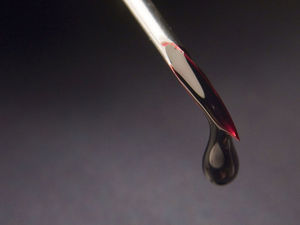Throughout pregnancy, a woman will spend countless hours caring for the unborn child through nutrition and proper exercise. As the date of delivery approaches, pregnant women, in many cases, are now offered an option to select a birthing due date with the use of a medical procedure known as labor induction. While 75 percent of all births are delivered vaginally, labor induction offers a pregnant woman an opportunity to select, in most cases, the birth date of the newborn she has cared and nurtured through the gestational period.
Labor induction is simply a medical term used to define a birthing process by which an obstetrician will recommend the use of medical technology, usually medications, to induce or begin the birthing contractions associated with labor and delivery of an infant. In doing so, the contractions will aid in the dilation of the cervix and assist with encouraging delivery of an infant within a particular time period. While there are many medical techniques for encouraging birth, most physicians will, ultimately, use the administration of intravenous drugs to encourage labor and delivery more promptly. Let’s first examine the options available without the use of IV medications during pregnancy.
As a first line of labor induction, most obstetricians will begin by “breaking the water”. Simply put, the obstetrician will insert a small appliance into the vaginal wall, puncturing the placenta allowing for an escape of the amniotic fluid. In doing so, the lack of amniotic fluid, in some cases, is enough to encourage the onset of birthing contractions and, therefore, encourage the birthing and delivery process.
Secondly, while still a prescription medication, although not administered by IV, some obstetricians will combine water eruption with a hormonal based gel, prostaglandin, inserted in the vaginal canal, against the cervix. Prostaglandin gel works to relax and soften the cervix so as to encourage dilation. This process, in combination with a water break, often results in the promotion of labor and delivery within a few hours. What is important to note is the necessity of delivery following water rupture as, without amniotic fluid, both mother and baby are at greater risk for infection. For this reason, the obstetrician will closely monitor the labor induction process to ensure the labor and delivery is proceeding as planned.
As a tertiary level of labor induction, the obstetrician may opt to use intravenous synthetic hormones. While there are risks with using IV medications, the induction process is usually successful when this third level of care is applied during the pregnancy and delivery process. In theory, these IV hormones are intended to simulate the natural hormone released during labor, Oxytocin. However, in rare cases, Oxytocin may be unsuccessful in the delivery process and, therefore, lead the pregnant women into a situation involving cesarean section.
Beyond all of these techniques, many pregnant women are concerned with pain medications administered during labor. Whether using simple prostaglandin gels or full use of Oxytocin synthetic hormones by IV, it is important to know that pain medication can also be administered, including the use of an epidural during labor and delivery. Beyond epidurals, many pregnant women also obtain relief from a pregnancy education class in the La Mazz techniques for breathing during labor.
When choosing the method in which to delivery a newborn, optimal outcomes are, generally, achieved by allowing the body to naturally progress through pregnancy and into delivery. However, in the 21st century, women are now provided choices of labor and delivery from simple labor induction to cesarean sections.
When considering a scheduled due date for birth, discuss labor induction with the obstetrician as part of the prenatal visits.





